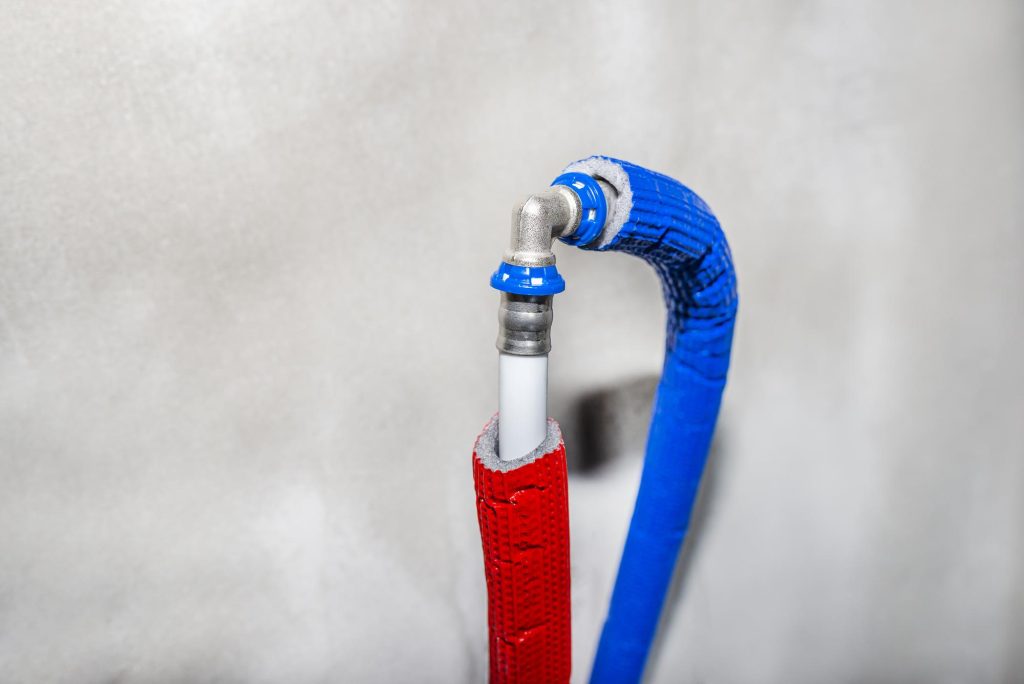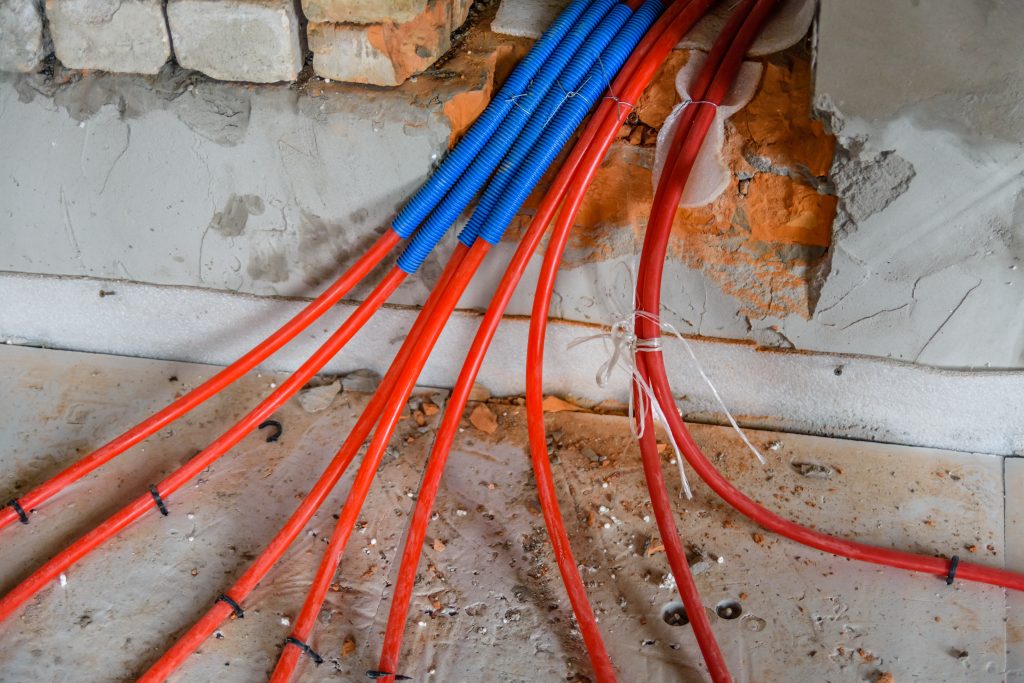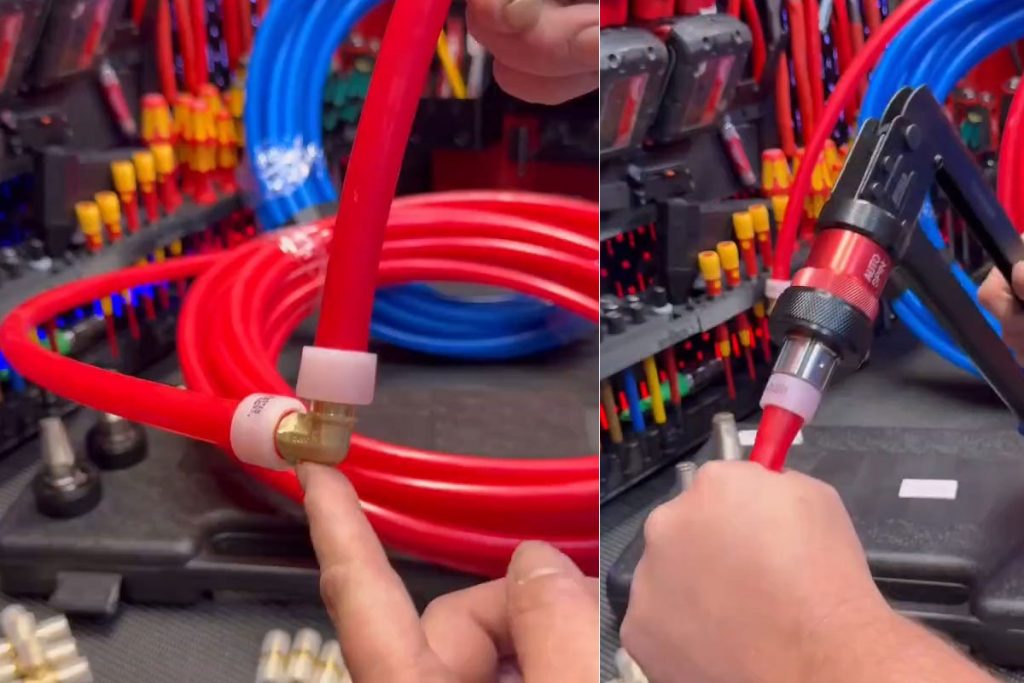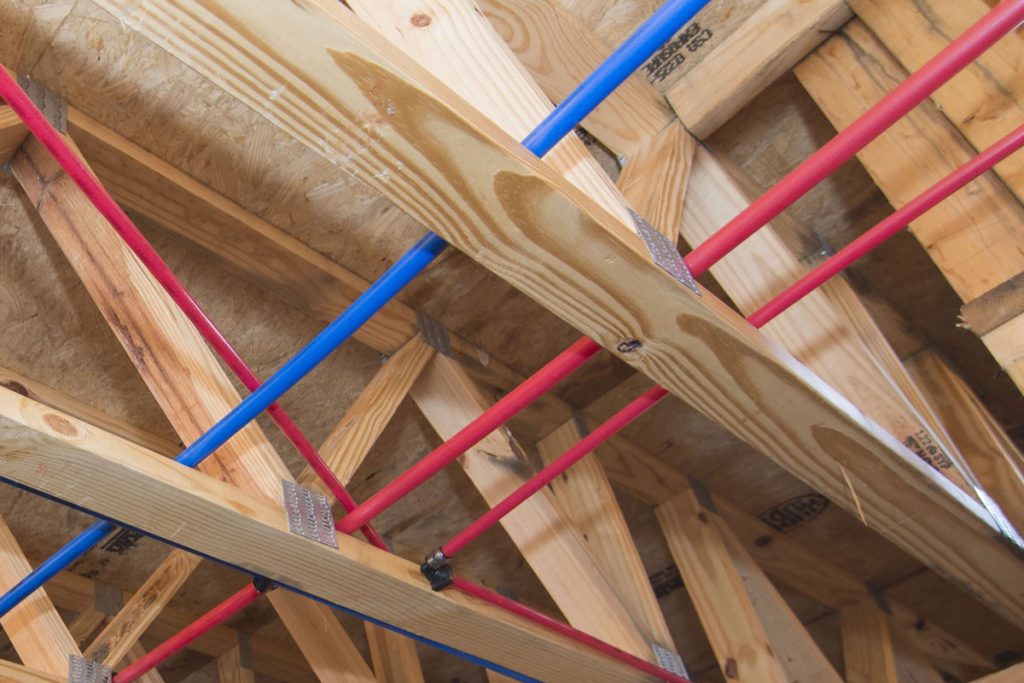When winter comes, frozen pipes become a major concern for homeowners in some parts of the country where cold winters are normal. In other areas, there is still a chance for the temperature to go low. In both cases, pipes are at risk of freezing and bursting. Burst pipes can lead to costly repairs, water damage and inconvenience. This has made the type of pipe you use matter.
PEX (cross-linked polyethylene) pipes have become a popular choice over traditional copper or PVC pipes. They are more freeze-resistant, flexible, affordable and resistant to corrosion. But you may still wonder, does PEX pipe freeze and burst, and which type of PEX works the best for your project. We’ll cover this information in this article to help you have a better understanding when choosing the proper PEX pipe for your applications. Check out PlumbingSell’s wide range of PEX pipes to find the most suitable one.
Table of Contents
Can PEX Pipes Freeze?
The short answer is yes. While the PEX pipes themselves don’t freeze, the liquid inside of them does, especially when the temperature goes extremely low. Although PEX pipes can tolerate cold weather better than other rigid material pipes like copper or PVC, they can still freeze when exposed to extremely low temperatures. PEX pipe freezing is less likely to cause direct and immediate damage because of its flexibility and capability to expand when frozen.
Although PEX pipe is more freeze-resistant than other materials, frequent exposure to freezing temperatures and stress caused by frozen water inside will still weaken it, which increases the chances of failure and leaks. This can still cause potential cracks and bursts on frozen PEX pipes, especially at fittings and connections. When water freezes and turns into ice, it will force the PEX pipes to expand in all directions. The outward expansion of ice in a pipe will cause PEX tubing to expand in diameter and not be able to contract into the original shape in time. Although PEX-A pipe is considered the most flexible type of tubing, there still is a likelihood for it to fail, not to mention for PEX-B and PEX-C piping systems.
You might be wondering what’s the lowest temperature of a PEX pipe handle. Most PEX pipes can withstand temperatures as low as 20°F (or -7°C), but if the water inside the pipe freezes repeatedly over time, it has a higher possibility of causing issues. The uninsulated areas are more vulnerable to PEX pipes, so it would be better to have extra precautions in certain places.
Will PEX Pipe Burst?
Although PEX pipes are extremely burst and freeze-resistant compared to traditional materials because of their insulation properties and natural flexibility, there are still chances for them to explode. The chemical structure of PEX pipes allows them to have higher flexibility; this has made them capable of expanding when ice forms inside the pipes. This has lowered the chances of breaking. However, if the water inside the pipe remains frozen for an extended period, repeated freeze-thaw cycles can weaken the PEX pipes over time. In addition to this, while the PEX tubing itself may be able to withstand freezing or bursting, the fittings and connections, which are usually made of metal or plastic, can still crack under extreme weather.
Among the different types of PEX pipe, PEX-A has the best flexibility, and this significantly reduces the risk of immediate failure, as they are capable of accommodating the expansion of ice within the pipe. However, it is still not completely immune to damage. Not to mention the performance of PEX-B and PEX-C, which are less flexible than PEX-A pipes. They are more prone to developing stress cracks under extreme weather. Learn more about the difference between PEX-A, PEX-B and PEX-C pipes from our recent article.
Although PEX pipe freezing and bursting is less common, it is not completely avoidable, there are still chances for bursting to happen under prolonged freezing conditions. To help prevent this from happening, common methods are insulating exposed PEX pipes, applying heat tape and sealing gaps in crawl space. Additionally, keeping a small amount of water running in the pipes during extreme cold can avoid ice formatting inside the PEX pipes. While we do recommend using PEX-A for cold climates due to its superior expansion ability, the other types of PEX could still be a great option if they are installed and maintained properly.
How to Insulate PEX Pipe for Cold Weather
To prevent PEX pipe freezing in cold weather, proper insulation is one useful method, especially in crawl spaces, attics, basements, and exterior walls. One of the most common methods of insulation options is foam pipe insulation. This can help retain heat and reduce the pipe’s exposure to freezing temperatures. For additional protection in places that have extremely cold weather, consider using heat tape or heat cables to wrap around the pipes before applying insulation.
To properly install the insulation for the PEX pipes, the first thing to do is to measure the length and diameter of the pipes to ensure the correct size. Then, cut the pipe insulation of your choice to fit and slide it over the pipe. For added protection, wrap fittings separately. If you want to create more secure protection for PEX pipes, you can use spray foam to fill the gaps in walls, floors or crawl spaces. This will help lower the exposure of pipes to freezing temperatures, therefore reducing the possibility of PEX pipe freezing.

PEX A vs PEX B: Which is Better for Cold Weather?
Whether it’s PEX-A, PEX-B or PEX-C, this type of pipe is more resistant to freezing than traditional rigid pipes. The chemical structure of the PEX pipe material, cross-linked polyethylene gives it the flexibility to withstand pressure increases and better performance in extreme weather. However, among these three pipes, PEX-A is the superior choice due to its flexibility and ability to expand when frozen. PEX-A has a higher degree of shape memory, meaning it can return to its original shape after expanding. However, PEX-B tubing is less expandable, making it more prone to damage if frozen. But it is still more resistant to freezing than copper or PVC.
We do recommend using PEX-A for cold weather, as it is less likely to crack under prolonged freezing conditions. However, PEX-B is the better choice for budget-friendly projects, and it has a higher chlorine resistance, which makes it a better option for hot water applications. After understanding more about PEX pipes, you might feel more confident in deciding which one to use.
Conclusion
PEX pipes are a reliable choice for cold-weather plumbing, offering greater flexibility and freeze resistance compared to traditional materials like copper or PVC. However, prolonged exposure to freezing temperatures can still lead to potential pipe damage, especially at fittings or connections. Among the different types of PEX pipes, PEX-A pipe is the best option for cold weather due to its superior expansion capability.
However, it is important to notice that no PEX pipe is entirely immune to freezing issues like bursting or leakage. The use of heat tape application, making proper insulation and applying seal between gaps are essential for preventing these problems. If you are looking for the best PEX piping solutions for your project, explore PlumbingSell’s wide selection of EFIELD PEX supplies to find high-quality options that suit your needs.



